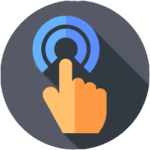RELEASE DEED
A release deed is a legal document that releases one party's interest in a property to another party. The document is executed when the property is sold or transferred, and it removes any claim the releasing party may have on the property.
Easy Process and Documentation
Required Paperwork
- Identification proof of both parties
- Property documents
- No-objection certificate from the lender (if applicable)
- Stamp paper of appropriate value
- Witnesses for signing the deed.
Process, Service Charges, Time duration
- When you send us your paperwork, our experienced staff will review your paperwork with local government officials to determine the service’s cost, feasibility, and completion date. After a quote has been given, it remains fixed. Location affects project duration and cost. Send us your documents and specific requirements to get a price and turnaround estimate.
- On an average Procurement takes four to six weeks.
2000+ locations Served
Happy Clients 50000+
Averge Google Rating 4.9
India's Most Trusted Legal Documentation Portal
A release deed, also called a deed of release, is a legal document that frees a property or asset from any claims or obligations that were made against it in the past. Usually, a release deed is signed when your home loan provider gives you a legal certificate that you have paid off your loan in full and the lender releases the collateral that was put up as security for the loan.
Through this document, a person can also give up his right to a piece of property. A deed of release frees each party from any obligations they had before and keeps any future disputes from happening.
Release deed types
The deed of release can be of different types.
- Release deeds are used to end personal guarantees. This means that the person who had earlier acted as the personal guarantor of another individual can end his personal guarantee.
- Release deeds are used to end loan agreements.
- Release deeds are used to end commercial disputes.
The Implications of a Release Deed
Once the release deed is signed and the property is free of all legal obligations, the transfer can no longer be changed. This is still true even if the person giving up his claim on the property hasn’t been given any money in exchange.
The deed of release makes sure that no one who was involved in the previous agreement can go back to it or start a new dispute about it.
Release deed in a house loan
All over the world, banks keep the original property documents for the entire length of a home loan. They won’t give you back your documents until you’ve paid off all of your home loan EMIs. Along with the original documents, they also give out a release deed that says they have no right to the property. The bank’s legal department will make the release deed, which will also say that there is no lien on the property.
Release deed sample format
Release deed for self-acquired property This DEED OF RELEASE executed on this day of (year) by (name), s/o (father’s name) residing at (address) hereinafter referred to as the RELEASORS of the One Part; AND IN FAVOUR OF (Name), S/o (father’s name) residing at (address) hereinafter referred to as the RELEASEE of the Other Part; The term RELEASORS and RELEASEE shall mean and include their heirs, executors, legal representatives, and assigns. WHEREAS the property measuring an extent of (number) sq ft and the building thereon situated at (Door no, Road in Village), bearing Survey no. (number) and within the limits of District (name) was acquired by/through the father of the Releasor and the Releasee herein in and by sale deed dated from and registered as Document no. of Book 1 volume filed at pages to on the file of the Sub Registrar of____________________ WHEREAS the father of the Releasor and the Releasee died intestate on leaving behind the Releasor and Releasee as his Class 1 legal heirs. WHEREAS the property more fully described in the Schedule hereunder is one of indivisible and it has been agreed by the Releasor to release his undivided ___________ right in the property in favour of the Releasee and the Releasee has also accepted the same. NOW THIS DEED OF RELEASE WITNESSETH AS FOLLOWS: THAT the Releasor did not receive any consideration from the Releasee herein and has released and relinquished his undivided__________________________________________ ___________ right in the property more fully described in the Schedule hereunder in favour of the Releasee herein. THAT the Releasor hereafter does not have any right, title, interest over the schedule mentioned property and the Releasee hereafter enjoys the same absolutely with full right, title and interest over the property more fully described in the schedule hereunder. THAT the Releasor covenant and undertakes to execute any further documents that may be necessary for assuring the title in favour of the Releasee herein with respect to the property more fully described in the schedule hereunder at the cost of the Releasee. SCHEDULE OF PROPERTY In witness whereof the Releasors have set their hands and signatures on the day, month and year first written in the presence of WITNESSES: 1. 2. |
Release deed stamp duty
As with all documents that allow a property right to be transferred, a release deed must be registered with the sub-office registrar’s after stamp duty and registration fees have been paid. Since property transfers are governed by state laws, each state has its own stamp duty rate for the release deed. In some states, you only have to pay a small fee to register a document.
FAQS
Yes, registration of a release deed is required under Section 17 of the Registration Act, 1908.
The person under whose name the deed of release is executed, needs to pay the stamp duty on the instrument.
No, a release deed cannot be reversed after registration













